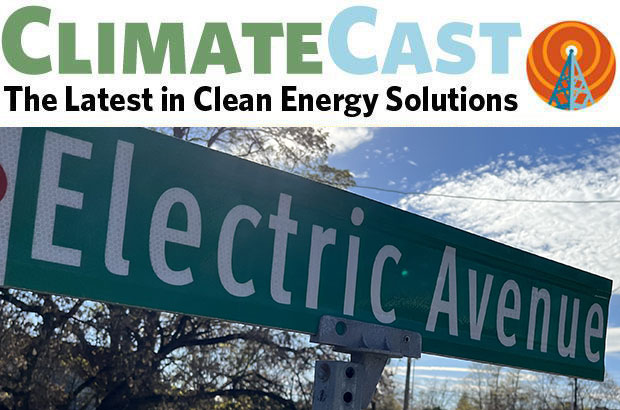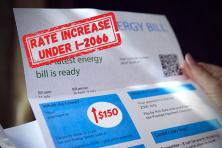What if that had been an oil train?
A catastrophic train derailment and explosion near East Palestine, Ohio this week sent up a black column of acrid smoke visible more than 30 miles away. The train was carrying hazardous chemicals including vinyl chloride; the explosion created a cloud of toxic phosphene, hydrogen chloride and other chemicals which quickly spread across a vast, ppopulated area. While nobody died as a result, area residents have complained of respiratory issues and are relying on bottled water; the ultimate health and environmental effects may not be known for some time.
Alarmed observers quickly began to describe the Ohio derailment as a wake-up call. Railway union leaders, former regulatory officials and others concerned about railway safety made clear several reasons the accident was preventable--in hopes that regulators will take quick steps to prevent future recurrences. The Obama administration had strengthened railway braking system regulations in 2014, following a 2013 cataclysmic oil train explosion which killed dozens of people in Lac-Mégantic, Quebec. However, under pressure from rail companies, the government weakened the new regulations; during the Trump administration, the new safety rules were entirely scrapped. Other failings may also have contributed to the crash; safety measures which should have alerted train operators in advance to a broken axle may not have functioned, and the company had not even labeled the hazardous chemicals dispersed by the explosion as toxic cargo.
Many Northwest communities have long been apprehensive about the threat of mile-long oil trains--dubbed “bomb trains” by researchers at Sightline Institute--rolling through populated areas and placing downtowns and neighborhoods at risk of another Lac-Mégantic-scale disaster. The Columbia River community of Mosier, OR had to clean up an oil train derailment several years ago, and a coal train derailed in central Washington at the height of the coal export threat. Meanwhile, oil companies and railroad operators are making plans to increase oil-by-rail traffic, including cargoes of volatile tar sands oil.
Heavy focus on heavy duty
Medium- heavy-duty (MHD) zero-emission vehicles continue to attract significant attention, with deliveries of electric semis becoming a regular headline in local and industry outlets, and even electrified concrete trucks. Cleaning up drayage vehicles offers an immediate opportunity for action. The California Air Resources Board (CARB) has proposed tighter environmental regulations for the state’s drayage operators that would require all port truck drivers to drive zero-emissions vehicles by 2035. Private companies are taking note with new models for electric-trucking-as-a-service rolling out and attracting funding. New reports show detailed information on what Port Authority of New York and New Jersey needs for drayage electrification at the US’ busiest port and New York City is considering a proposal to require the city’s entire on-road fleet, including heavy-duty trucks and specialty vehicles, to transition to zero-emission vehicles by mid-2035. Locally, Washington State is currently considering a program to increase access to MHD zero-emission models, charging, and vehicle demonstrations, following on its adoption of the Advanced Clean Truck rules in 2022.
Taking you to school
Electric school buses got a huge lift last year with $1 billion in grants allocated from the EPA’s Clean School Bus program; Vice President Kamala Harris visited Seattle last fall to announce the program. Currently only 1% of school buses nationwide are electric, but states are setting more ambitious targets for zero-emission bus fleets. Maryland has a law calling for new school buses to be zero-emission starting in 2025, and New York in 2027. The Washington legislature is currently considering a zero-emission school bus bill that would require new school bus purchases to be zero-emission as of 2035, funded in part by a new grant program.
Municipalities and school districts across the country are taking more deliveries of electric buses and school buses. Manufacturers are growing to meet the demand; some states are receiving their first-ever zero-emission models this month; additional federal funding to support healthy, quiet school bus electrification indicates that a transition is underway.
Electric cars get less special every week
The appearance of clever, slickly produced ads touting the many appeals of electric vehicles has become a Superbowl tradition, and this year was no different. While the emissions-free vehicles are still a distinct minority in traffic, that is changing fast. After a surge of buyers at the end of 2022, global EV sales topped 10 million for the year. Last fall, plug-in EVs accounted for nearly a quarter of new vehicle purchases in California.
With sales up 53% over the previous year, auto manufacturers are taking note of the lasting trend towards zero-emissions vehicles (except, somewhat stubbornly, former hybrid pioneer Toyota). Industry analysts forecast that average EV prices could fall to match or beat the cost of gas-powered cars as soon as this year, not to mention the point-of-sale subsidies included in last year’s Inflation Reduction Act. An article in The Atlantic called “Bring on the boring EVs” celebrating the fact that “EVs are just … normal now. Lots of people drive them for lots of reasons, not just your colorful hippie aunt or your tech bro brother-in-law who will not shut up about his Tesla Model S.”
The lack of a truly robust charging network remains one of the largest hurdles to continuing EV adoption, though government and private investment in charging infrastructure are expected to increase fast over the next year or two. And Tesla, the company with the most extensive network of chargers, has agreed to convert some of its proprietary charging stations for general use… as a condition for seeking a share of new government infrastructure grants.





